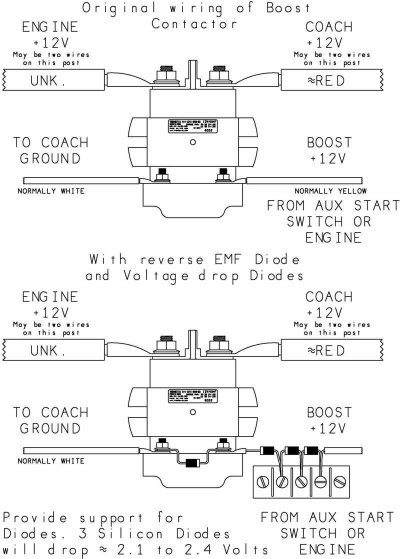John Canfield
Site Team
As time goes by, I will be bringing over some of the interesting threads I started in another forum in an attempt to add to our body of knowledge here. This particular thread, originated early summer, had over 6,000 views before it died. It will take a few days to recreate the essential knowledge of the original 11 page thread, so be patient while this unfolds. If you have anything to contribute to the topic, please fire away!
~~~~~~~~~~~~~~~~~~~~~~~~~~~~~~~~~~~~~~~~~~~~~~~~~~~~~~~~~~
The "seed" post:
We have now had our second or third failure of the battery bank bridging solenoid. This is the solenoid that energizes when you are running the engine to charge both battery banks, and energizes when you operate the "Battery Boost" switch.
I don't know why we have had so many failures, but I am about ready to yank it out and install a diode isolator (no moving parts!)
The disadvantage of the isolator is no more battery boost switch (unless I add that back in) and the diodes have a 1.2 volt voltage across them which will be manifested as heat (if 50 amps are passing through one diode to charge a bank, you have 60 watts that need to be dissipated.)
~~~~~~~~~~~~~~~~~~~~~~~~~~~~~~~~~~~~~~~~~~~~~~~~~~~~~~~~~~
The "seed" post:
We have now had our second or third failure of the battery bank bridging solenoid. This is the solenoid that energizes when you are running the engine to charge both battery banks, and energizes when you operate the "Battery Boost" switch.
I don't know why we have had so many failures, but I am about ready to yank it out and install a diode isolator (no moving parts!)
The disadvantage of the isolator is no more battery boost switch (unless I add that back in) and the diodes have a 1.2 volt voltage across them which will be manifested as heat (if 50 amps are passing through one diode to charge a bank, you have 60 watts that need to be dissipated.)

